![]() TiVo has signed a multiyear deal to make a version of its personal video recorder software available to customers of Comcast Cable, currently the King Kong of largest cable operators in the US.
TiVo has signed a multiyear deal to make a version of its personal video recorder software available to customers of Comcast Cable, currently the King Kong of largest cable operators in the US.
The deal is the first of the partnerships the struggling pioneer hopes to forge with cable operators and will result in Comcast and TiVo working together in peace and harmony to develop a version of the TiVo service to be made available on Comcast’s current DVR platform.
The new service will be marketed with the TiVo brand, and is expected to be slipping out on Comcast’s DVR products in a majority of Comcast markets in mid-to-late 2006.
This long-term, non-exclusive partnership will provide Comcast customers with the opportunity to choose the TiVo service with features like Season Pass and WishList, available as an additional option.
If all goes to plan, the service will showcase TiVo’s home networking, multimedia, and broadband capabilities.
“We are focused on providing our customers with a 21st Century television experience,” said Brian Roberts, the chairman and CEO of Comcast Corporation. “TiVo has revolutionized the way consumers watch and access home entertainment. By partnering with TiVo, we are continuing to deliver technology that enables our customers to watch what they want when they want on TV. This agreement also reflects our commitment to work with leading technology providers to offer customers more value and choice in their home entertainment experience. Customers love the ease and convenience of our current DVR service, and we look forward to working with TiVo to enhance that service and offer customers the best-in-class DVR experience.”
Steve Burke, the president of Comcast Cable and COO of Comcast, added, “The strong TiVo brand, the clear track record of customer loyalty it has and its cutting-edge features make this a terrific partnership and exciting new product for Comcast.”
Tom Rogers, the vice chairman of TiVo, noted, “It is very important that TiVo has found a way to work with the nation’s largest cable operator on a cooperative basis to develop a state-of-the-art TiVo service, fully integrated with a cable set-top box, that will make TiVo available to millions of cable viewers. … This is a real milestone for TiVo and for the cable industry, but most importantly it is a milestone for television viewers.”
Analysts are hailing the agreement as a lifeline for the Californian-based company, whose shares jumped 75 percent, or US$2.87 (e2.14/£1.50), to close at US$6.70 (e5/£3.50) in Tuesday trading on the Nasdaq Stock Market.
Although TiVo currently boasts more than 3 million subscribers it has struggled to find a business strategy that would increase its subscriber base and withstand gnawing competition from generic DVRs offered directly by big cable companies.
In the quarter that ended Jan. 31, TiVo lost a thumping great $33.7 million, substantially heftier than the $12.4 million loss in the same period a year earlier.
 The Comcast deal means that TiVo will have to adapt its software to work on Comcast’s existing DVR platform. This will enable TiVo to blast out the advertising it sells as interactive video clips in their onscreen menu to Comcast subscribers.
The Comcast deal means that TiVo will have to adapt its software to work on Comcast’s existing DVR platform. This will enable TiVo to blast out the advertising it sells as interactive video clips in their onscreen menu to Comcast subscribers.
Comcast will continue to market its own DVR, with new customers getting a dual-tuner DVR, letting viewers record two shows at once and high-definition television; TiVo offers such features only to DirecTV satellite customers.
Comcast subscribers who plump for the TiVo service will get funky features such as “Suggestions,” which recommends shows based on past viewing habits, and the ability to schedule recordings over the Internet.
The agreement gives TiVo access to Comcast’s 21.5 million cable customers, including 8.6 million digital cable customers who can take advantage of DVRs
 Motorola is to bundle GPS navigation software and hardware with the European versions of its A780 and MPx220 smart phones.
Motorola is to bundle GPS navigation software and hardware with the European versions of its A780 and MPx220 smart phones.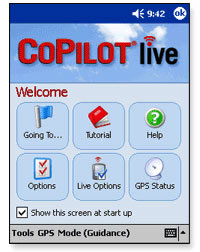 GPS navigation has proved a bit of a hit in Europe, with sales bolstering up an otherwise declining PDA market.
GPS navigation has proved a bit of a hit in Europe, with sales bolstering up an otherwise declining PDA market. Both handsets use Bluetooth to communicate with a separate GPS receiver.
Both handsets use Bluetooth to communicate with a separate GPS receiver. America Online has announced a consumer VoIP application, Wanadoo joins the party. The AOL offering will go head-to-head with traditional telephone companies, cable firms and a multitude of start-ups competing for the mainstream-bound VoIP market.
America Online has announced a consumer VoIP application, Wanadoo joins the party. The AOL offering will go head-to-head with traditional telephone companies, cable firms and a multitude of start-ups competing for the mainstream-bound VoIP market. The AOL product will also allow customers to turn IM sessions into phone calls when one of the parties enters the phrase “Can I Call?”
The AOL product will also allow customers to turn IM sessions into phone calls when one of the parties enters the phrase “Can I Call?” “The new IMAGEON processors from ATI combine advanced audio and video processing capabilities to turn mobile phones into mobile entertainment centers.”
“The new IMAGEON processors from ATI combine advanced audio and video processing capabilities to turn mobile phones into mobile entertainment centers.” Announced at the CeBIT tradeshow, Pretec have introduced a new memory card format for smartphones, called the C-Flash cards.
Announced at the CeBIT tradeshow, Pretec have introduced a new memory card format for smartphones, called the C-Flash cards.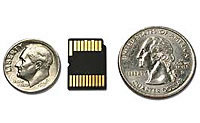 This format will also have support for MU-Card, a specification from China lead by Mu-Card Alliance. C-Flash has been adopted as the next small form factor version of MU-Card (called MU-Flash).
This format will also have support for MU-Card, a specification from China lead by Mu-Card Alliance. C-Flash has been adopted as the next small form factor version of MU-Card (called MU-Flash).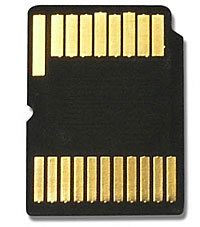 C-Flash has also been submitted to the MMC Association to be considered as the next small form factor standard of MMC.
C-Flash has also been submitted to the MMC Association to be considered as the next small form factor standard of MMC. MP3-player supplier Jens of Sweden and Jonas Birgersson (founder of broadband supplier Bredband2) have reported the Anti-Piracy Agency to the Swedish Data Inspection Board (SDI).
MP3-player supplier Jens of Sweden and Jonas Birgersson (founder of broadband supplier Bredband2) have reported the Anti-Piracy Agency to the Swedish Data Inspection Board (SDI). Bredband2 has already received queries from the police based on the agency’s registrations.
Bredband2 has already received queries from the police based on the agency’s registrations. Besides, we think that terrorizing and persecuting the users is the wrong method. Instead, we should popularise and support all the great Swedish companies that develop unique digital services. Stop the witch-hunt and support the legal alternatives.”
Besides, we think that terrorizing and persecuting the users is the wrong method. Instead, we should popularise and support all the great Swedish companies that develop unique digital services. Stop the witch-hunt and support the legal alternatives.” The Swedish police have prosecuted 136 people for illegal file sharing after complaints from the AP-agency, and the agency has vowed to increase the number.
The Swedish police have prosecuted 136 people for illegal file sharing after complaints from the AP-agency, and the agency has vowed to increase the number. Straight out of the Billy Bonkers School of Barking Inventions, Sony Ericsson’s new Bluetooth controlled camera, ROB-1, lets users steer a wheeled camera around using the joystick or keypad on a mobile phone.
Straight out of the Billy Bonkers School of Barking Inventions, Sony Ericsson’s new Bluetooth controlled camera, ROB-1, lets users steer a wheeled camera around using the joystick or keypad on a mobile phone. “This is a great gadget for people who really like testing the latest technology first hand and having fun with new applications. Just like the Sony Ericsson Bluetooth Car which appealed to a wide range of gadget fans, we believe that ROB-1 will become the ‘must have’ Bluetooth gadget to show off to friends and family!!
“This is a great gadget for people who really like testing the latest technology first hand and having fun with new applications. Just like the Sony Ericsson Bluetooth Car which appealed to a wide range of gadget fans, we believe that ROB-1 will become the ‘must have’ Bluetooth gadget to show off to friends and family!! MTV in Germany has been demonstrating an interactive TV portal that combines satellite and broadband services.
MTV in Germany has been demonstrating an interactive TV portal that combines satellite and broadband services.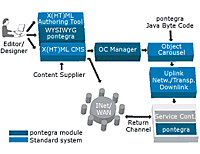 MTV is using Alticast for the technical implementation and broadcast of the interactive service.
MTV is using Alticast for the technical implementation and broadcast of the interactive service.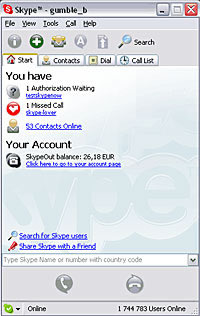 “Our one million SkypeOut users prove that savvy consumers will pay for value – and we will continue to delight users by delivering the software and services they seek to realize the potential of modern communications.”
“Our one million SkypeOut users prove that savvy consumers will pay for value – and we will continue to delight users by delivering the software and services they seek to realize the potential of modern communications.” Unlike the creative whirlwind that accompanied the dot.com explosion, innovation seems to be a lot slower in the 3G content market.
Unlike the creative whirlwind that accompanied the dot.com explosion, innovation seems to be a lot slower in the 3G content market. ITN news got in on the act too, supplementing their mobile news updates with “today in history” style clips trawled from their vast video archives.
ITN news got in on the act too, supplementing their mobile news updates with “today in history” style clips trawled from their vast video archives.